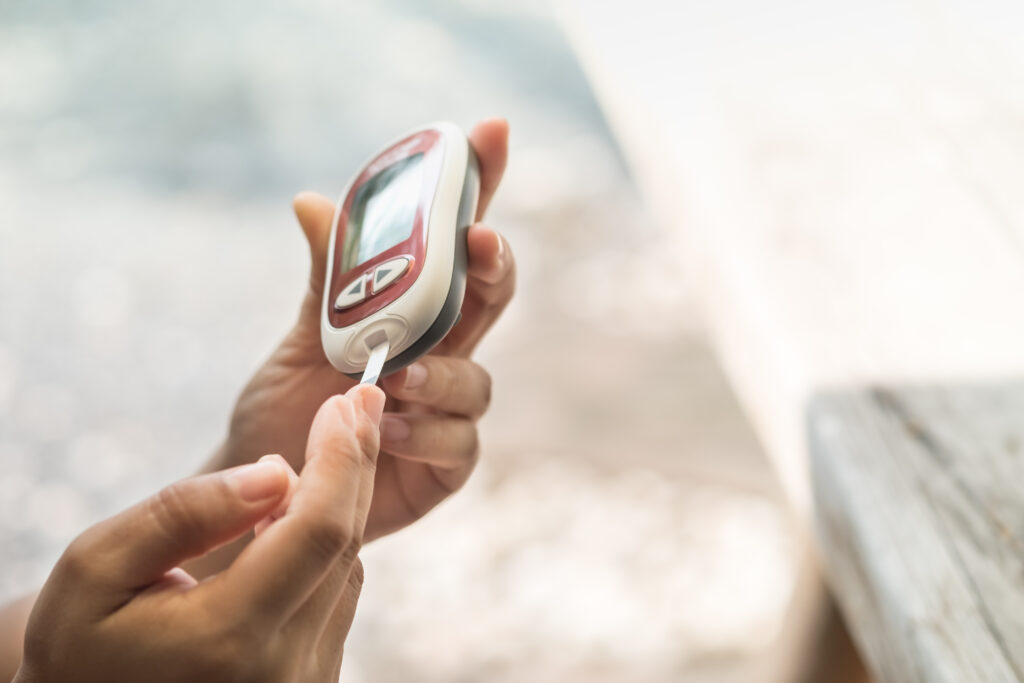Over the past decade, the list price of insulin has skyrocketed leading to considerable increases in out-of-pocket spending for Medicare Part D beneficiaries. Despite recent policy efforts to close the Part D coverage gap, Medicare beneficiaries still face monthly out-of-pocket costs that can more than double depending on what phase of the Part D benefit design they are in. Schaeffer Center researchers examined how use of insulin changes as cost-sharing fluctuates over the course of the year.
The study, published in JAMA Network Open, found that cost-sharing for insulin more than doubled when enrollees moved from the initial coverage phase to the coverage gap. This increase in out-of-pocket spending was associated with reduced adherence- a troubling finding given the importance of insulin for these patients’ health.
“There is a perception that we have closed the doughnut hole and fixed Part D,” said Erin Trish, associate director of the USC Schaeffer Center for Health Policy & Economics and assistant professor at the USC School of Pharmacy. “But our study shows that we still have a long way to go to make the system works for patients.”
Changes in Cost Sharing Linked to Lower Adherence
Trish and her colleagues Katrina Kaiser and Geoffrey Joyce calculated mean out-of-pocket spending on insulin by plan type and benefit phase from a sample of 2018 Medicare Part D claims. They looked at cost-sharing and adherence for beneficiaries enrolled in two types of plans: typical plans sold directly to individuals and plans connected to an employer.
Individual plan enrollees’ mean cost sharing on insulin per 30-day equivalent was $50.57 in the initial coverage phase, $117.10 in the coverage gap, and $36.86 in the catastrophic coverage. By contrast, average out-of-pocket spending for employer plan enrollees was consistently low across the benefit phases at $32.73, $31.99, and $19.73, respectively.
The researchers studied the impact of increased coverage gap cost-sharing on insulin adherence, comparing changes in utilization across benefit phases among enrollees in these two different types of plans. They find that the increased coverage gap cost-sharing was associated with a 6.4 percentage point reduction in adherence, relative to employer-plan enrollees whose cost-sharing was stable across phases.
Recent Policy Changes Will Help Beneficiaries
More than 3 million seniors rely on insulin to control their diabetes and mean out-of-pocket spending on this essential medicine has nearly doubled over the last decade.
In response to rising costs, the Centers for Medicare and Medicaid Services (CMS) introduced a new program late last year, the Senior Savings Model, a voluntary program that caps out of pocket spending on insulin to $35 per month across all phases starting this year.
“High insulin prices and their associated out-of-pocket costs have become the poster child of what is wrong in pharmaceutical pricing and coverage. Capping out-of-pocket spending is an important step in improving access but addresses just one facet of the problem,” said Joyce, director of health policy at the USC Schaeffer Center and an associate professor at the USC School of Pharmacy.
The study’s findings suggest that the Senior Savings Model will reduce out-of-pocket spending on insulin and increase adherence, however these findings also point to the need for broader reforms to address the Part D market as a whole.
This study was also authored by Katrina Kaiser, research programmer at the USC Schaeffer Center. Funding for this study was provided by the USC-Brookings Schaeffer Initiative for Health Policy.
